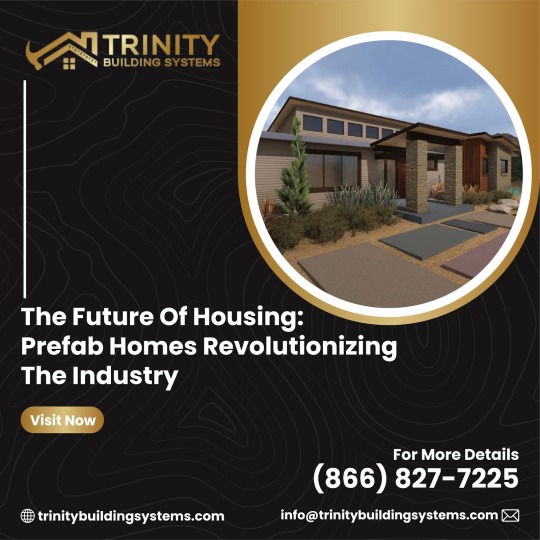#rusticmodular
Explore tagged Tumblr posts
Text
The Future of Housing: Prefab Homes Revolutionizing the Industry
Innovations in the field of construction and architecture have given rise to various housing solutions that are changing the way we perceive and build homes. Prefabricated homes, or prefab homes, and Rustic Modular Homes are a prime example of such advancements.
These homes are pre-manufactured in sections off-site and then assembled on location. This blog post explores the concept of prefab homes and how they are revolutionizing the housing industry. However, we will also help you to know What is a Prefab.

Introduction to Prefab
Prefabricated homes, commonly known as prefab homes or modular homes, are residences that are built off-site in a controlled factory environment. These homes are constructed in sections or modules, which are then transported and assembled on the intended site. The building process involves precise engineering, quality control, and streamlined production, ensuring efficient and cost-effective construction.
Advantages of Prefab Homes:
1. Speed of Construction:
Prefab homes are constructed much faster than traditional on-site builds. Since the majority of the work is done in a controlled factory environment, delays due to weather conditions or other external factors are minimized. This makes prefab homes an attractive option for those in need of quick housing solutions.
2. Cost-Effectiveness:
The efficiency of the manufacturing process in a factory setting often leads to cost savings. Material procurement, labor, and waste reduction contribute to a more affordable overall cost compared to traditional construction methods, especially when it comes to Build a Prefab Home.
3. Quality Assurance:
The controlled factory environment allows for precise quality control measures during the entire construction process. Each module is inspected thoroughly to ensure it meets the necessary standards before being transported to the site. This results in a higher quality final product.
4. Sustainable and Environmentally Friendly:
Prefab homes often employ eco-friendly construction techniques and materials. Additionally, the controlled factory setting minimizes material waste, making them a greener alternative to traditional construction methods.
5. Design Flexibility:
Prefab homes offer a wide range of design options and styles. They can be customized to fit various preferences and needs, ranging from contemporary and modern designs to more traditional and cozy styles.
Popular Types of Prefab Homes
1. Modular Homes:
These homes are built in multiple sections or modules that are later assembled on-site to create a complete structure. They are highly customizable and can be designed by Log Home Builders in Colorado to fit various sizes and styles.
2. Panelized Homes:
Panelized homes use pre-built wall panels and components that are assembled on-site. This method allows for faster construction and precise engineering.
3. Container Homes:
Converted shipping containers are used as the building blocks for these homes. They are an excellent example of upcycling and repurposing materials, making them a sustainable choice.
4. Tiny Homes:
Compact, functional, and often portable, tiny homes are a popular prefab option. They provide a minimalist lifestyle and can be customized to suit individual needs.
Conclusion
Prefab homes from Trinity Buildings Systems are a modern and innovative solution to the challenges of conventional construction methods. Their advantages in terms of speed, cost-effectiveness, quality, sustainability, and design flexibility are reshaping the future of housing. As technology continues to advance, we can expect even more exciting developments in the realm of prefab homes, further enhancing their appeal and broadening their adoption across the globe.
1 note
·
View note